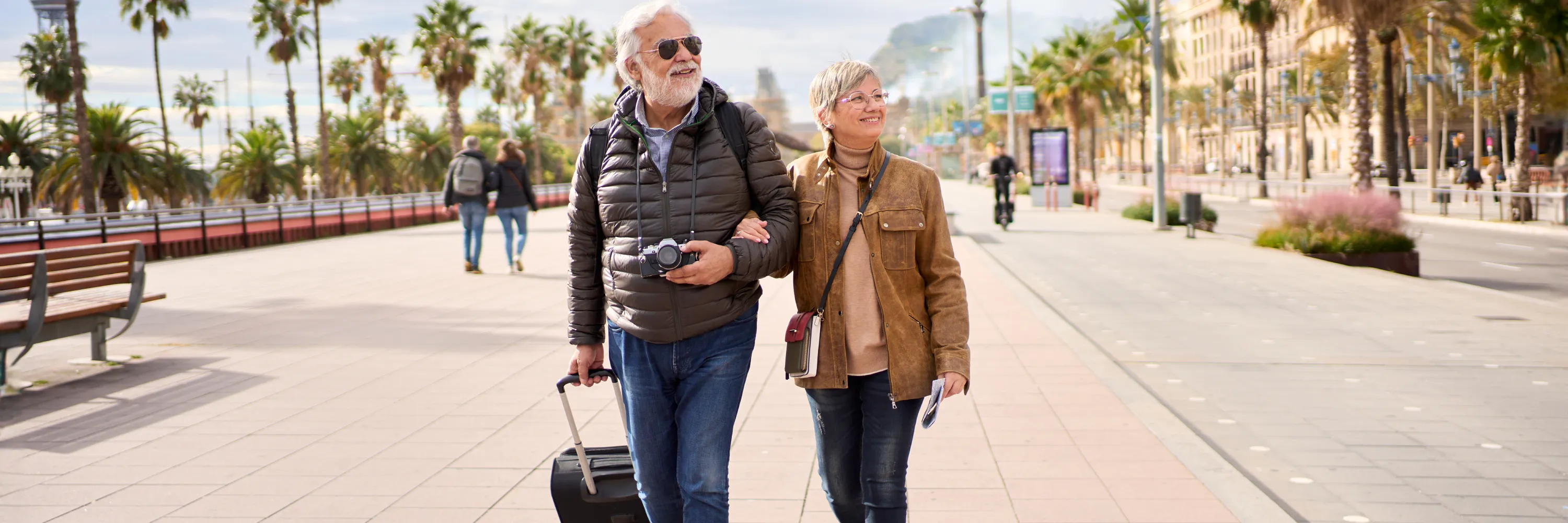
Long travel days, unfamiliar beds, and lots of time on your feet—vacations can challenge your body in unexpected ways. If you’ve ever returned from a trip feeling more stiff than restored, you’re not alone.
This guide offers general strategies active adults use to support mobility and comfort before and during travel. Whether you're hiking in a national park, walking through city streets, or managing long flights, these tips may help you stay more resilient on the move.
Don't forget to try out Daily Movement Routine While Traveling once you're on your trip.
Supporting your body ahead of time can make a big difference in how you feel during and after your trip—especially if your plans include long walking days, hiking, carrying bags, or simply staying active in a new environment.
If your vacation involves lots of standing or moving, preparing at least 2–3 weeks in advance may be a good idea. This isn’t a formal “training plan,” but a light prep phase to develop areas like:
Even just 2–3 brief sessions per week can offer a helpful base for managing the physical side of travel.
Vacations often involve more walking than usual—sometimes on uneven surfaces, hills, or stairs. Supporting your legs with simple movements may help reduce early fatigue.
Try:
From lifting bags into overhead bins to wearing a backpack through a city, your trunk plays a big role in how you handle load. Strengthening around the hips, pelvis, and spine may support more efficient movement.
Try:
Many people spend more time sitting in the weeks leading up to vacation—working, planning, or traveling. Reconnecting with hip extension and hamstring mobility can help support posture, stride, and energy use while walking.
Try:
Explore more hip and hamstring-focused mobility strategies here.
Travel days are often long stretches of inactivity followed by bursts of hustle. Here are a few ways to help your body handle the switch.
If you’re in a terminal for more than 45 minutes, try:
Related: Airport Exercises: Stay Mobile During Long Travel Days
Extended sitting can affect your hip position, circulation, and low back comfort.
Try:
For road trips, this Car Travel Mobility Reset offers simple movements to do during stops. And check out our Long Flight Movement Tips if you're flying.
Once you arrive, it’s easy to get caught up in the excitement—and forget to move intentionally. A little daily mobility can go a long way.
Start the day with gentle joint movement to offset hotel mattress stiffness.
Try:
Tip: Just 3–5 minutes can help you feel more awake and grounded.
Pause during long outings to give your lower body a quick reset.
Try:
Use moments of waiting (tours, meals, photos) as mobility checkpoints.
Ease into rest with a calming routine that supports circulation and recovery.
Try:
For more evening-focused mobility, read End-of-Day Unwind: Mobility for After Work, Before Bed.
You don’t need to stick to a strict routine. Instead, think of these ideas as tools to adapt your energy, body, and itinerary.
Preparing for your vacation goes beyond checklists and travel docs. Supporting your mobility, balance, and recovery with a few intentional movements can help you stay energized and present while you're on your feet and get the most out of your vacation.